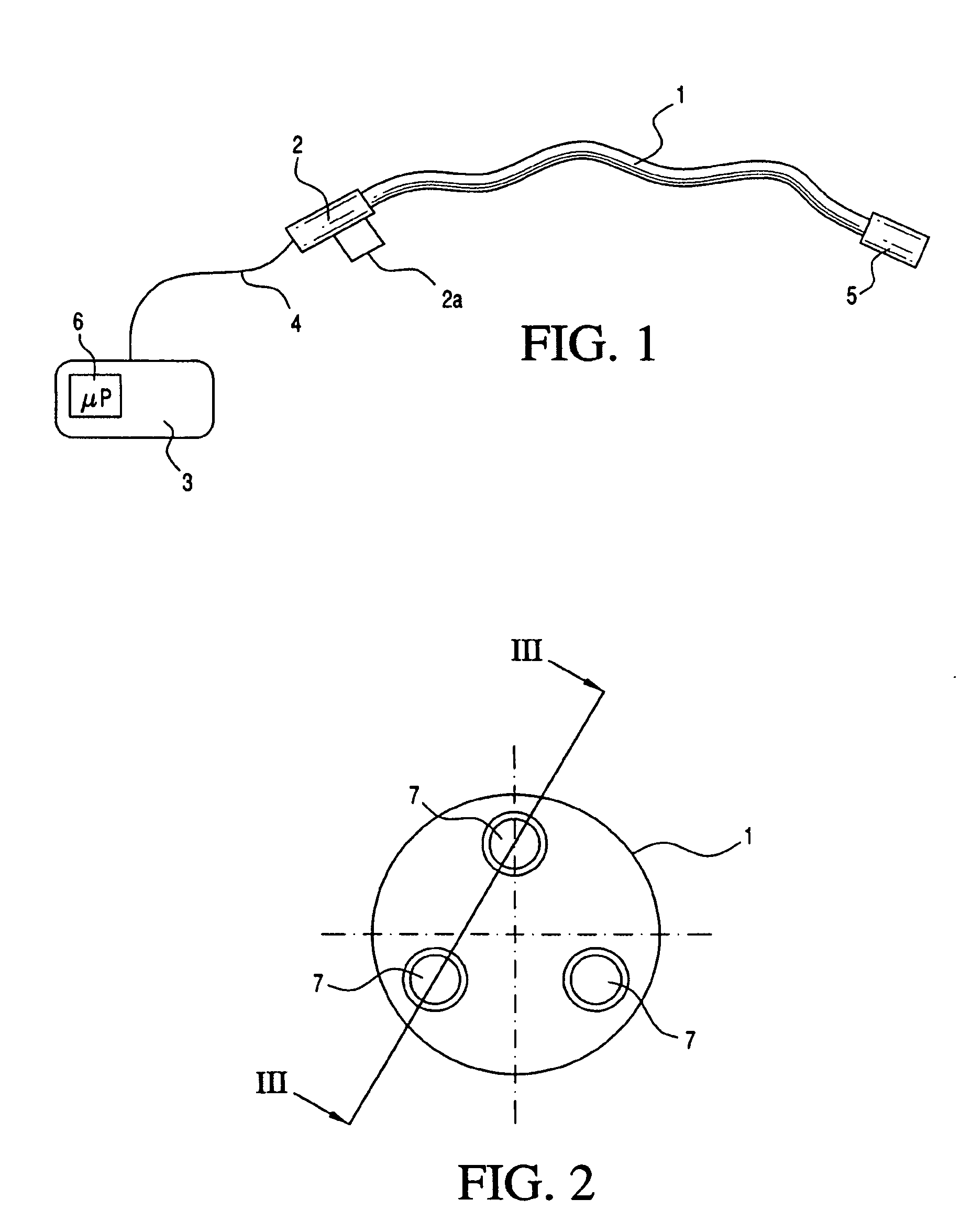Medical apparatus system having optical fiber load sensing capability
- Summary
- Abstract
- Description
- Claims
- Application Information
AI Technical Summary
Benefits of technology
Problems solved by technology
Method used
Image
Examples
Embodiment Construction
[0059] The present invention is directed to medical apparatus and methods for use with diagnostic and treatment systems wherein it is desired to measure contact forces between a distal extremity of the apparatus and a tissue wall of an organ or vessel. The load sensing capability of the present invention may be used intermittently to measure the contact forces at discrete points, or alternatively, used to continuously monitor contact forces to assist in manipulation and operation of the apparatus.
[0060] Medical apparatus incorporating the present invention illustratively may be configured as catheters or guide wires to be manually manipulated by a clinician, with the clinician using a visual or audio cue output by the load sensing system to determine, for example, optimum position for measuring an electrophysiologic value or performing treatment. Alternatively, the medical apparatus may be robotically controlled, with the load sensing system of the present invention providing a fee...
PUM
 Login to View More
Login to View More Abstract
Description
Claims
Application Information
 Login to View More
Login to View More - R&D
- Intellectual Property
- Life Sciences
- Materials
- Tech Scout
- Unparalleled Data Quality
- Higher Quality Content
- 60% Fewer Hallucinations
Browse by: Latest US Patents, China's latest patents, Technical Efficacy Thesaurus, Application Domain, Technology Topic, Popular Technical Reports.
© 2025 PatSnap. All rights reserved.Legal|Privacy policy|Modern Slavery Act Transparency Statement|Sitemap|About US| Contact US: help@patsnap.com



